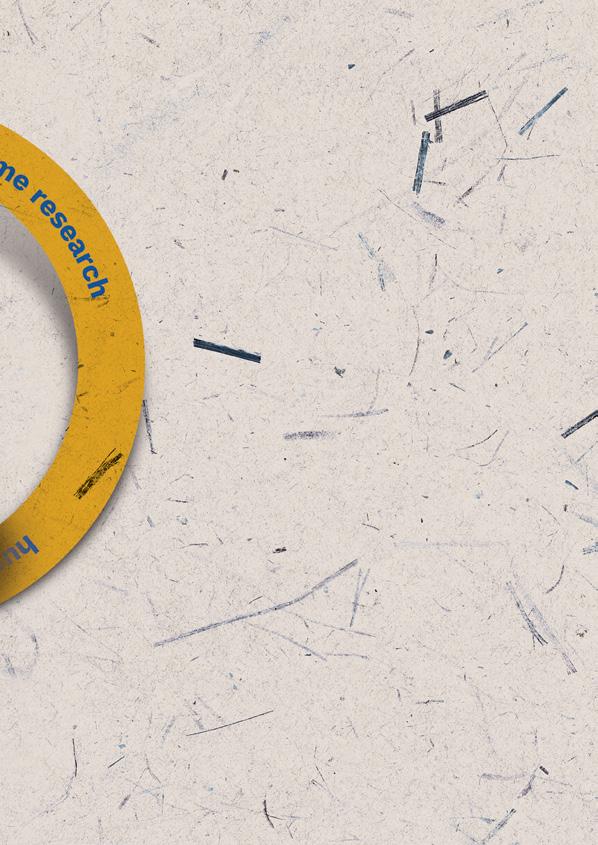
14 minute read
Translating DNA into Product Development
Janila Pasupuleti, a lead scientist at India’s ICRISAT, talks about the peanut genome research
// Please introduce yourself, Janila. I’m a plant geneticist by training, and by profession I do peanut breeding, and this is my twelfth year at ICRISAT. In addition to that, I have a role as a cluster leader, as I oversee the breeding of six crop commodities for ICRISAT. We have three cereals and three legumes, including groundnut, spread across Asia and Africa (both Western and Southern Africa) and a total of 15 breeding programs.
// How would you characterize your contribution to the genome initiative? I should say that I have both contributed and benefited; not only on behalf of ICRISAT, but also for the national programs in Africa and Asia, by using these new genomic tools in the breeding programs. We can now develop the varieties which are required for both markets and production ecologies. I’m basically in the business of translating the advances, the new tools, into product development. That’s my role and that’s how I have been engaging with the partners from both the US and China, as well as with the national program partners in Asia and Africa with whom we work. Of course, I also contributed to the initiative from a technical aspect, in terms of providing guidance, oversight and then giving technical feedback; particularly, again, by translating the use of tools into the final products.

// Did you participate in all the international meetings within the initiative? I did. We are talking about the meeting we called Advances in Arachis Through Genomics and Biotechnology. I participated regularly, and, in fact, I was the one who spearheaded expanding the scope of this work beyond genetics, to make sure that we considered the agronomic issues. That’s because some of the toughest problems, like aflatoxin contamination, will probably not find a solution from genetics only, but also from agronomy and post-harvest management. I know that Steve Brown is also a big fan of this kind of focus and so is David Jordan. The next meeting is going to be in October.
// Right, it is going to be held in the US, in Alabama. We were going to meet during 2020 but then the event was canceled because of the Covid pandemic.
// You mentioned aflatoxin. We talked about it a little bit with Steve Brown and, as you anticipated, he agrees with you that it is a particularly difficult problem to approach because it’s not just the genetics of the plant, but how the plant interacts with the fungus that creates the aflatoxin. So what’s your assessment? Do you think in the future it’s going to be possible to figure out prac- tical solutions? Yes, aflatoxin is definitely a global problem, and it’s not only a health concern for the consumers, but also a trade concern; a lot of consignments get rejected and that has a significant economic impact. I fully agree with Steve; it can’t just be handled by genetics alone, because the infection can also happen in the post-harvest phase, not necessarily when the pods are attached to the plant, during the processing, in storage, and during the transport. That’s why I think a holistic approach would be very important. We must start off with good agricultural practices; when the crop is being harvested good drying, storage and transport practices. While we do that, monitoring the contamination along the value chain is essential. We should set up an entire ecosystem and build it around peanut production to address this very important problem. Now some countries also use prediction methods, because contamination depends on the interaction between the plant and the fungus, and a lot of this process is affected by the environment, so you can predict that the crops coming from a certain area, depending on the weather, the rainfall temperature, and other variables, bear a likelihood of contamination or not. Of course, genetics has a major role and ICRISAT is investing heavily in it. For example, in the past, we have developed screening protocols and then we moved ahead to develop genetic research as well, and now we are trying to understand the candidate genes which at least give some level of association with the resistance. In this fashion we are ready to move ahead with gene editing and make use of all the modern tools available to address, at least to some extent, this problem.
// Going back to the Peanut Genome Initiative, which just concluded ten years of work, the breakthrough was the sequencing of the genome, both wild and commercial species. But, in general, how would you characterize the work of the initiative, and its relevance? I I mean let me put it this way: unlike crops like rice, wheat, corn and others, in which a lot of investment has been done and a lot of genomic resources are available, peanut is almost like an orphan crop. That was until the peanut genome initiative came in, not only with the US funding but also from other donors as well; ICRISAT, for example, has also invested to reach common goals. Having a DNA sequence is to have a baseline so one can work on it. Establishing the genome sequences of the progenitor species Arachis ipaenensis and Arachis duranensis and then the cultivated species is one of the biggest contributions of the Peanut Genome Initiative. This work enables researchers to identify the genes or the genomic regions for the trait of interest; it could be high oleic, it could be drought resistance, or disease resistance, whatever. That association between the trait of interest and the genome can be fully established only when you have this genome sequence. This breakthrough has opened the floodgates; different researchers are now enabled to develop flanking and diagnostic markers, which we can actually use in the breeding programs to develop the product which is the cultivar. The genome also brought a lot of understanding of the plant itself, its evolution, and how its adaptation developed over time.
// Which markers would you assess are the most important ones for the development of production in general? The most important ones, I would say, are the ones related to foliar fungal diseases: leaf spots and the rust, because these diseases are of global importance, and they can bring down yield if the disease is very severe. At ICRISAT, we define “product profiles” and have categorized resistance to foliar fungal diseases as a “must-have trait”, so we won’t advance any product that does not have a level of resistance. If I take the example of my own breeding program, we could mainstream these foliar fungal disease resistances into our breeding pipeline thanks to the DNA-markers, so that’s the first one. But other markers are important as well. Using DNA-markers, ICRISAT has developed high-oleic acid peanut lines and together with partners in India commercialized the first higholeic acid peanut varieties, Girnar 4 (ICGV 15083) and Girnar 5 (ICGV 15090), in 2020 in India. Subsequently, Spanish-type high-oleic acid peanut varieties, GG 40 (ICGV 16668) and GG 39 (ICGV 16697), were commercialized in India in 2022-23. The high-oleic acid peanut lines developed by ICRISAT were shared and are being tested by collaborators in Bangladesh, Myanmar, South Africa, Malawi, Mali, Nigeria and New Zealand for commercial release.
// One thing that impressed me about the initiative is the scope of the international cooperation: so many countries, so many institutes and researchers and universities participated. I don’t know if this is so common in scientific research in agriculture. What is your opinion? Yes, the collaboration which has gone into the initiative has been fantastic. Once you have the genetic sequence available you can go ahead with research in different specific areas. At ICRISAT, for example, we developed an array with 58k SNP markers which anyone around the globe can use. And similarly, the University of Georgia has developed a 48k array which, again, anybody can use. Right now, we are working on a new array with a different concept which would be very cost-effective; the arrays now available cost around 38 dollars, and this one would cost only about 8 to 10 dollars, making it available also for developing countries. This has been a fantastic international collaboration. I should mention that these kinds of international collaborations do exist for other crops, but wherever it exists it’s mostly through the CGIAR (Consultative Group on International Agricultural Research) initiatives. To have the CGIAR engaged, I think that enables the research to be trickled down to be used for a vast number of researchers across the globe.
// Let’s talk about genetically modified organisms (GMOs). Possibly peanut scientists did not really work a lot on GMOs, perhaps with the perception that the public may not want to go in that direction, even though, from a scientific standpoint, it is possible to argue that there is no such thing as a health risk. Do you think this will change in the future? Especially if we consider that big advantages can come from the development of GMO science for peanuts. As a researcher, I do fully agree that it is a very powerful technology, particularly for the traits which we are not able to handle with the current available genomic or genetic resources. I think that for aflatoxin we may have to move toward GMOs. While we are having these conversations and debates, some progress is happening; we have now a new tool called genome editing tool, I think you are aware of it. That gives another opportunity to researchers to develop these edited products and gene editing does not have the same negative perception as GMOs. More countries have deregulated their gene editing products, so I think that could be a very good opportunity for the future. Having said that, we have to consider that for gene editing to be successful, we need to have a good understanding of the candidate genes; it is fundamental to have clarity. With the genome sequence which we have right now, in a couple of years, we would be at a stage where we can have these edited products, with the additional advantage that we could validate whether this candidate gene is really responsible for the intended trait we are looking for or not. So, there are two powerful applications: one is to really see whether the candidate genes really are the real candidates for the targeted intended trait; the second is for the development of the product itself.
ICRISAT is one of the world’s most important centers of research in peanuts. What are the current priorities of this institute? One important focus is product development, which is the variety of development for the target countries in Asia and Africa. We work alongside the national program partners. Everything starts off with defining the market segments for a particular country that the breeder is interested in. We also work with our national partners so that they can use these tools in their breeding programs to enhance selection efficiency. We then test these lines across the different locations and make decisions based on the data we generate. This data is stored in an institutional repository available to researchers. A very important area of focus, as I said, is aflatoxin. Today, for example, we just had a brainstorming session for four hours on this very topic; we all sat together and looked at the results of different streams of science and then discussed what we are going to do next, and how we are going to address this problem. If aflatoxin is the first area of focus, the second one, I would say, is diseases such as stem rot disease; soil bone diseases like stem rot are a big growing challenge. But we are also thinking about smut disease; at the moment smut is confined to South America, but it could spread in the next decade or so, and as a global institute, it is important that we anticipate the problem. Another area we are looking at closely is drought tolerance. Especially for those countries where drought is becoming very severe and, in some cases, combined with heat as well. Another element of focus is product quality; high-oleic acid oil is a very important feature, so is the amino acid profile. In general, we ask what is that profile which the industry is looking for.
// Great! Is there anything you would like to add? A current concern is the free exchange of germplasm internationally. In some cases, sovereign countries are limiting the exchange of germplasm among collaborating researchers, and I think that’s slowing down progress. Let me remind you of the paper you have covered in your magazine by Soraya and David. In many cases we received genetic material from abroad and then developed it and spread the new variety across all the countries; everybody has benefited from it. Of course, we must find the right balance between country-based intellectual property and human intellectual collective property so that we can have a flourishing international collaboration.


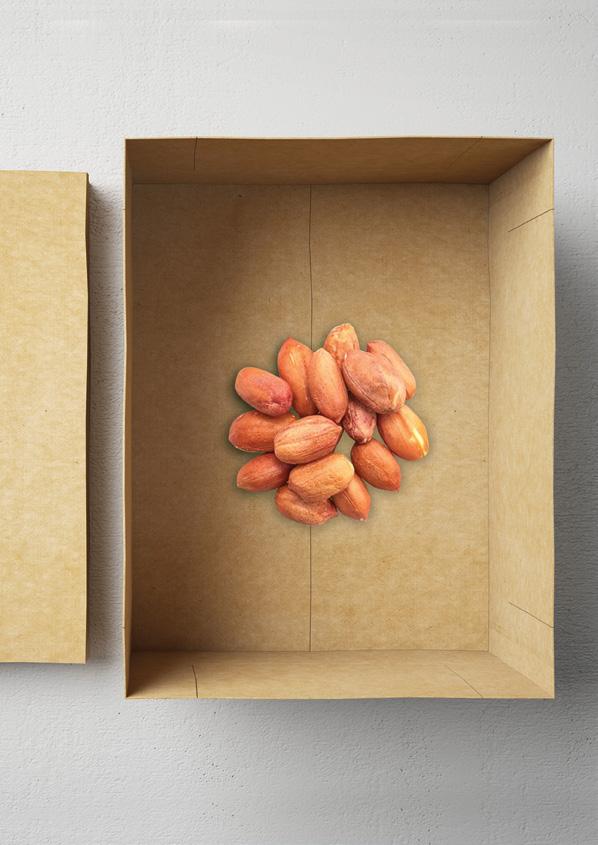
In previous issues of World Peanut Magazine, we have covered the various steps of peanut processing up to the point where the product is ready to be shipped. It is now time to cover how the peanuts are packaged before they can be sent to the customers: the size of the packaging solutions, the materials, and how these vary across the producing countries.
Many of the details concerning packaging are negotiated between the seller and the buyer and various issues determine the outcome:
_ Customers’ specific requests
_ Packaging availability in the origin country
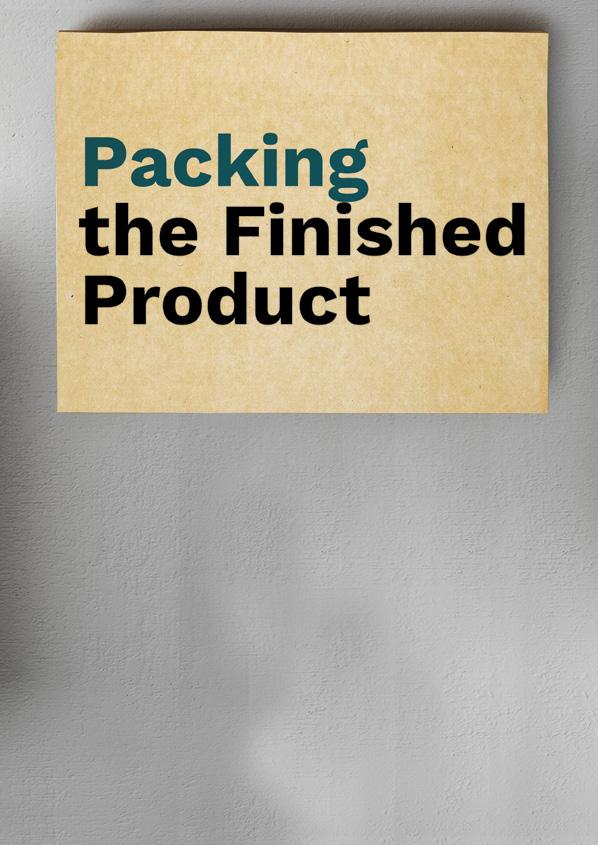
_ Size standards
_ Container size availability (40–20ft)
_ Weight restrictions at origin or destination country
_ Transit times
_ Route to follow (a significant choice here is whether the route crosses the equator or not, due to the impact it has on potential condensation)
_ Type of product to pack (raw peanuts, blanched, inshell, or roasted)
In this article we will try to thoroughly address the widest adopted options in the different peanut-producing countries.
Type and sizes
There are three main ways to pack peanuts based on size:
2.
3.
Labor and weight restrictions
Within the peanut trade, in the vast majority of cases either bigbags or bags are used, while the rules in the countries of destination play a major role in deciding for one or the other.
In some countries there is a prevailing trend toward minimizing labor costs, and bigbags are a very good option here. In other places, on the contrary, local government regulations are designed to maintain some traditional practices, like the use of smaller bags, as a way of not eliminating jobs for the local communities.
Another element to consider is weight restrictions at origin or in the destination countries. There may be a maximum truck gross weight allowed for circulation on certain roads, which, of course, limits the maximum load in the container.
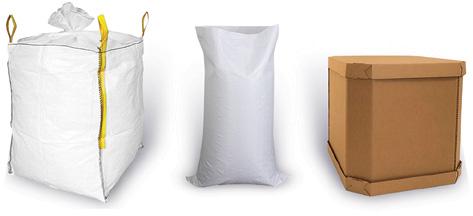
10’ CONTAINER
Payload
30,000 lbs
Tare weight
3.500 Lbs.
Cubic capacity
Exterior Dimensions
L. 10’
W. 8’
H. 8’6”
Interior Dimensions
L. 9’ 5”
W. 7’8” -1/8”
H. 7’9” -5/8”
20’ CONTAINER
Payload
48,600 lbs
Tare weight
5.015 Lbs.
Cubic capacity
Exterior Dimensions
L. 20’
W. 8’
H. 8’6”
Interior Dimensions
L. 19’ 5”
W. 7’8” -1/8”
H. 7’9” -5/8”
40’ CONTAINER
Payload
80,350 lbs
Tare weight
8.377 Lbs.
Cubic capacity
Exterior Dimensions
L. 40’
W. 8’
H. 8’6”
Interior Dimensions
L. 39’ 5”
W. 7’8” -1/8”
H. 7’9” -5/8”
Container size
A very important element to consider when designing the peanut-packaging strategy is the type of container to be used, especially its size. Every container has a maximum allowed weight and space availability as shown in the table below.
10ft containers are not commonly used for peanuts. In practice, 20ft containers can be loaded at full capacity only with bags, using bigbags is not convenient due to sub-utilization of the space (only 10 bigbags totaling 12.500kg vs 19.000kg with bags). With 40ft containers the situation is completely different; they cannot be loaded at full capacity due to weight restrictions in the majority of the countries, leading to a maximum load in the 25-28.000kg range.
In conclusion: if the customer requires 25-50kg bags, both 20 and 40ft, containers can be used (20 footers with 18-19Tm of peanuts and 40 footers with 25-28Tm of peanuts). In case the customer wants bigbags, although both options are possible, a 40ft container is the best option, giving the cheaper freight per Tm of peanuts (20-footer with 10-12 Tm of peanuts, or 40-footer with 24-25 Tm).
Materials
Another aspect to consider is the packaging material.
As for the bags, the options are: jute, plastic and paper.
The bigbags are essentially all made of polypropylene fabric with different characteristics in terms of:
_ Type of fabric: standard type, coated type, breathable type
_ Density of the fabric
Type of fill and discharge spouts
_ Type of handling loops
_ Safety factors
Food-grade fabric and paints (if there is any printing)
_
Bulk bins are used for specific purposes within the US, as they require special installation for loading and dumping the peanuts.
Standardization
Different peanut-producing countries have worked on the standardization of bigbags, aiming to reduce variabilities between suppliers, with all the benefits associated.
In the US, for instance, the American Peanut Council has developed a specification standard for the bigbags as a guideline for the American peanut processors.
The Argentina Peanut Chamber is working to define a common specifications set for the 1250kg bigbag.
Packing systems
Once the packaging is chosen, another aspect to evaluate is the technical process to perform the filling.
There are different options ranging from manual procedures up to very sophisticated and automatic systems, with many solutions in between.
In all filling systems there are some fundamental points to cover:
_ Packing the product in a gentle way to avoid splitting
_ A scale should be employed to ensure the correct weight in every packaging unit
_ Proper closure of the filling spout (or proper stitching in the case of bags)
_ Proper identification of every packaging unit, including, at a minimum, lot number, producer information, country of origin, weight, type of product.
Some pictures of filling equipment can be seen below:
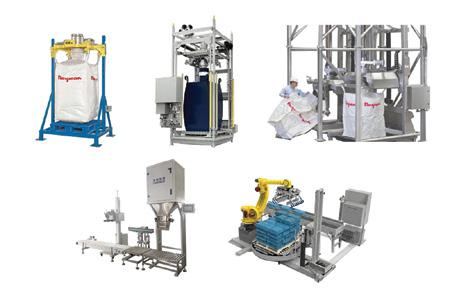
China
JANE ZHENG, from QINGDAO SHENGDE FOODS CO LTD, talks about packaging habits in China.
“Blanched and HPS peanuts are usually packed in same way in China, whether they are shipped abroad or to local customers. The most popular bag is the 25kg vacuum bag made of woven plastic; it has the great advantage of keeping the product fresh during transportation. This item replaced the jute bag, which was widespread until the year 2000. In summer the totes (carrying weights starting at 650kg) are also often prepared with vacuum. The non-vacuum totes, used mostly during winter, range from 850 and 1,250kg. Certain European markets, like Spain, require a special packaging: two 12.5 kg bags in a carton of 25kg in total. It is an expensive way to pack peanuts, and it makes sense for high-end products. To Japan, many companies ship 25kg cartons without vacuum; the trip is relatively short and Japan prefers to avoid vacuums for environmental reasons. Jute bags, in the 25 and 50kg format, are also used for shipment to Japan. Peanut producers also provide tailored packaging, in the 300 grams to 5kg range, for all kinds of peanuts based on buyers’ requirements for Korea, Japan and some European markets. The packaging of inshell peanuts is done either with tote bags, starting at 850kg, with plastic bags in the 15, 25 and 30kg format, or 15kg vacuum bags.”
Brazil
ROBSON FONSECA, from Coplana, tells us about peanut packaging in Brasil:
“Our main export markets are Algiers and Russia, and those markets usually demand 25 and 50kg bags. In some cases, we also ship using 1,250kg bigbags. I would say that about 98% of all peanuts end up travelling between these two types of packaging. Vacuum bags are also in use, for instance at Coplana; we can say it is a Brazilian standard.”
— USA
PETER VLAZAKIS, American Peanut Council, explains the US standars.
“APC has established a system to certify suppliers of tote bags that meet the defined specifications, although use of APC spec bags is ultimately voluntary. The vast majority of blanched and raw shelled kernels are transported in 1 metric ton (2,200 pounds) polypropylene tote bags.” The APC specs can be accessed here: link
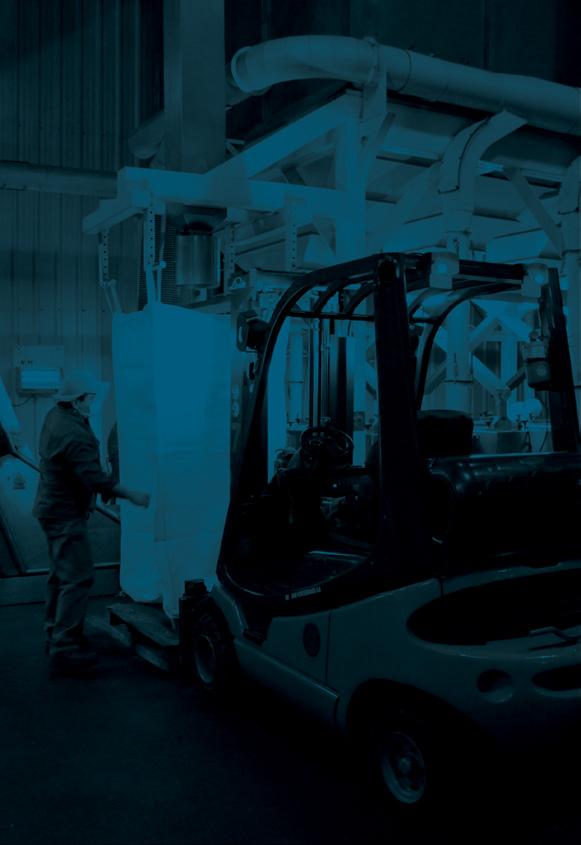
—
Argentina
JAVIER MARTINETTO, Argentina Peanut Chamber, tells us about current trends in his country
“Almost all exports from Argentina to Europe are shipped in 1250kg bigbags for both raw and blanched peanuts. Jute bags practically disappeared; however 25 and 50kg plastic bags are still in use for certain destinations, mainly Russia and Algiers. Shellers are working on automated packaging systems due to legal restrictions concerning the maximum weight workers can handle.”





